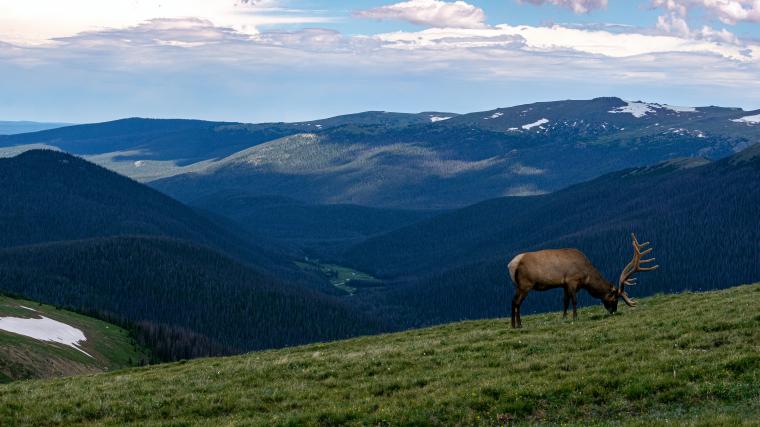
In a nutshell
Large herbivores have a daunting task in spring – to fill up on enough food to account for the energy depletion of winter and, for females, to build up fat stores to support lactating young in late spring and summer. Finding high-quality foraging areas is therefore crucial to these animals in the spring months.
Researchers of a new study in Proceedings of the Royal Society B studied two populations each of bighorn sheep, mule deer, elk, moose, and bison in Wyoming and Utah, to see whether the animals’ movements across the landscape matched the spring green-up of their forage. The authors used GPS collars to track animal movements and a measure of vegetation greenness collected via satellite sensor called the normalized difference vegetation index (NDVI), which serves as a proxy for vegetation phenology and production. Specifically, they looked at the instantaneous rate of green-up (IRG), which is an index that quantifies the distribution of vegetation through time. They found that 7 of the 10 populations selected patches of forage with high IRG, supporting the hypothesis that these animals track the green wave.
What is special about this study?
While it has long been suspected that a variety of animals “surf the green wave,” how precisely the animal movements are aligned with green-up has been unknown. This study uses a novel method to discover whether herbivores select habitat patches when they are at peak IRG, which is when the forage is low in fiber but high in protein. The authors found that some of the herbivore populations tracked the crest of the green wave, while others seemed to favor the leading or trailing edge in spring green-up.
What does this mean for YOU?
Learning more about how animals select habitat patches, and how much flexibility exists in their behavior, will help managers to protect these species in the face of future climate change and land development. Managers can use this information to enhance spring habitats, or make high-quality forage more accessible to maintain these populations. So you can still enjoy the sight of bighorn sheep perched on rocks, elk bugling, and bison herds on an open plain.
Citation: Merkle, J.A., Monteith, K.L., Aikens, E.O., Hayes, M.M., Hersey, K.R., Middleton, A.D., Oates, B.A., Sawyer, H., Scurlock, B.M, Kauffman, M.J. 2016. Large herbivores surf waves of green-up during spring. Proceedings of the Royal Society B (283) 20160456, DOI 10.1098/rspb.2016.0456.